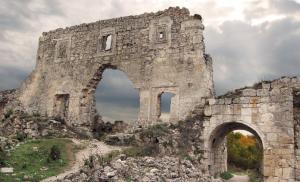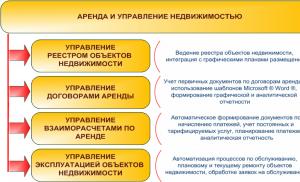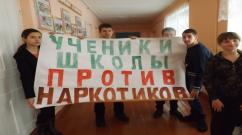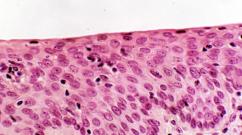The most famous princes of the Vladimir-Suzdal principality. Vladimir-Suzdal Principality: princes
IN Kievan Rus tendencies of feudal fragmentation intensified. The appanage principalities that existed before were increasingly moving away from the capital city of Kyiv and acquiring the features of independent states.
IN different parts In Rus', new centers appeared, to which the surrounding principalities gravitated - Veliky Novgorod, Pinsk, Vladimir-Volynsky and Vladimir-Zalessky. The latter eventually became the most important center of Northwestern Rus'.
It was around Vladimir and Suzdal that the conglomerate united appanage principalities, from which the Moscow kingdom grew over the centuries. But what do we know about the Vladimir-Suzdal principality itself?
The emergence and strengthening of the Suzdal Principality
In 1125, according to the will of Vladimir Monomakh, his son received the Rostov Principality as an appanage reign. In the same year, he moved his residence to the south, to Suzdal - and became involved in the internecine struggle that struck all of Rus' after the death of Monomakh.
According to Vladimir's plan, each of his sons was to reign in his own inheritance, subordinate to the Grand Duke, who was sitting in Kyiv. The Grand Duke's throne was supposed to be passed from older brother to younger brother, which means Yuri was seventh in the line of succession. The ambitious Rostov-Suzdal prince was not happy with this prospect.
It should be said that few of the then Rurikovichs monitored the observance of the order of succession to the throne. Yuri Dolgoruky twice expelled his nephews from Kyiv and became the Grand Duke, but in 1157 he himself was poisoned by the Kyiv boyars.
Yuri's son Andrei Bogolyubsky recent years During his father's life he reigned in Vladimir-Zalessky. After the death of Yuri Dolgoruky, he became the sole ruler of Rostov, Vladimir and Suzdal and also began to lay claim to the great reign. It was he who made Northwestern Rus' truly independent from Kyiv.
The destruction of Kyiv and the rise of Vladimir
 In the first years of his reign, he stayed away from the struggle for the great reign. Only ten years after the death of his father did he set out on a campaign against Kyiv. In 1169, he took the capital city by storm and plundered its churches, including St. Sophia Cathedral and Tithe Church. Before this, none of the Rurikovichs dared to commit such a desecration of the ancient capital. After the capture of Kyiv, Andrei Bogolyubsky proclaimed himself Grand Duke, but at the same time returned to his old residence in Vladimir-Zalessky, leaving one of his younger sons in Kyiv.
In the first years of his reign, he stayed away from the struggle for the great reign. Only ten years after the death of his father did he set out on a campaign against Kyiv. In 1169, he took the capital city by storm and plundered its churches, including St. Sophia Cathedral and Tithe Church. Before this, none of the Rurikovichs dared to commit such a desecration of the ancient capital. After the capture of Kyiv, Andrei Bogolyubsky proclaimed himself Grand Duke, but at the same time returned to his old residence in Vladimir-Zalessky, leaving one of his younger sons in Kyiv.
For the first time in the history of Rus', the great reign was torn away from Kyiv. And from that moment on, both the Kyiv and Vladimir princes were titled grand dukes. Although Kyiv remained one of the key centers of the Russian state, the role of Vladimir in the life of North-Western Rus' was now much more important than the role of the first capital.
Mongol invasion and its consequences
At the end of the 12th and beginning of the 13th centuries, the descendants of Yuri Dolgoruky fought among themselves for power in Northwestern Rus'. At the same time, the princes of Vladimir limited the rights of veche gatherings of Vladimir, Rostov, Suzdal and other cities. At the same time, the differences between North-Eastern (Vladimir) Russia and South-Western Russia worsened, where the positions of the Galician-Volyn princes strengthened. Of the five Vladimir princes of the pre-Mongol era, only one - - participated in the struggle for Kyiv and, even for a while, became the Grand Duke of Kyiv.
In 1238, the Golden Horde invaded Northwestern Rus', and two years later - into Southeastern Russia. The Principality of Vladimir suffered greatly from Batu's invasion: fourteen of its cities were burned to the ground. Soon, however, Prince of Vladimir Yaroslav Vsevolodovich received a label for the great reign in the Horde. The son of Yaroslav became the most famous of the rulers of the Vladimir-Suzdal principality. He was the last prince who ruled simultaneously Vladimir, Veliky Novgorod and Kiev. After the death of Prince Alexander, his vast possessions were again divided into appanages.
The Vladimir-Suzdal principality as a single whole ceased to exist. The princes of Vladimir continued to be titled great, but now new centers appeared in North-Western Rus': Moscow and Tver. The reign of Vladimir was finally abolished under, who finally united it with the Grand Duchy of Moscow.
The power of one person over another destroys, first of all, the ruler.
Leo Tolstoy
The Vladimir-Suzdal Principality and its history - an important page Russian history, since already at the turn of the 12th-13th centuries it was the princes from Vladimir who achieved dominance over other principalities, as a result of which it was the Vladimir-Suzdal land that began to dominate in Rus', and its princes began to exert the greatest influence on the politics and ways of not only their principality, but also to the neighboring ones. In fact, by the 13th century, the political center of Rus' was finally transferred from the South (Kyiv) to the Northeast (Vladimir and Suzdal).
Geographical location
The Vladimir-Suzdal principality was located in the northeastern part of Rus', between the Oka and Volga rivers.
Map of the Vladimir-Suzdal land in the 12th-13th centuries
The largest cities in the principality: Vladimir, Suzdal, Uglich, Tver, Moscow, Kostroma, Galich, Beloozero, Veliky Ustyug and others. Mostly the cities were located in the southern part of the principality, and the further north you went, the fewer cities there were.
The borders of the Vladimir-Suzdal principality passed with: the Novgorod Republic, the Smolensk principality, the Chernigov land, the Ryazan and Murom principalities.
Princes
At the Lyubechsky Congress of Princes, it was decided that the Rostov-Suzdal land (as the principality was originally called) was transferred to the management of the family of Vladimir Monomakh. Therefore, Yuri Dolgoruky, the son of Monomakh, became the first prince here.
Full list of princes:
- Yuri Dolgoruky (reigned 1125-1155)
- Andrey Bogolyubsky (1157-1174)
- Vsevolod the Big Nest (1176 - 1212)
- Yuri Vsevolodovich (1218 - 1238)
- Yaroslav Vsevolodovich (1238-1246)
- Alexander Nevsky (since 1252).

It is enough to look at the list to understand that these were the people who enjoyed the greatest influence in Rus'. The Vladimir-Suzdal princes mainly pursued the goal of independence from Kyiv and the subordination of other principalities to their power.
Peculiarities
The political features of the Vladimir-Suzdal principality consisted in the strong power of the prince. Unlike most other lands, here the prince was the head and decided all important issues. Schematically, the political features of a given land can be represented as follows.

The strong power of the prince was possible due to the fact that in these lands there was large number new cities, where a strong boyars had not yet formed. As a result, only the prince had real power, and the Veche was only advisory in nature.
In general, the features of the development of the principality in the appanage period (12-13 centuries) are as follows:
- Unlimited princely power.
- Population increase. People moved to these lands because they were relatively safe from raids by nomads.
- Agriculture was actively developing in the principality. There were many forests that served as natural protection.
- Rapid growth of cities. This applies both to new cities built during this period (Moscow, Pereyaslavl-Zalessky and others) and to old cities (Vladimir, Suzdal, Rostov, Yaroslavl and others).
- Geographical location at the intersection of important trade routes along the Volga and Oka.
Economic features
Despite geographical location, The Vladimir-Suzdal land had a large amount of arable land, which made agriculture a key aspect economic development region. Other industries also actively developed in these lands: fishing, hunting, beekeeping.
The resettlement of people from the south played a great influence on the economic development of the principality. They not only moved, but also carried elements of culture with them. Many of them were artisans, as a result of which the craft in the Vladimir-Suzdal land began to develop very quickly.
Development
Around the 30s of the 12th century, the Vladimir-Suzdal (at that time still Rostov-Suzdal) principality got rid of the power of Kyiv. This is how the creation of their own principality took place, which was significantly different from others in form. political structure. Princely power was strong in Vladimir. In many ways, this was the reason for the rise of these lands over others. Suffice it to remember that in other principalities the system of government was different and less effective: in Novgorod the boyars ruled through the Veche, and in the Galicia-Volyn lands the power of the prince was comparable to the power of the boyars.
Initially, the principality was called Rostov-Suzdal (under Dolgoruky), then Suzdal land (under Bogolyubsky) and only then Vladimir-Suzdal land (under Bolshoye Gnezdo).

An important event for this principality happened in 1238 - it was attacked by the Tatar-Mongols. Moreover, this was one of the first principalities for the Mongol invasion, so the Vladimir-Suzdal land suffered the main blow. As a result, from 1238 the principality recognized Mongol power and was dependent on the Horde.
Culture
The culture of the Vladimir-Suzdal land has developed multifaceted. Chronicle writing flourished here. Characteristic feature chronicles of this principality - emphasizing the greatness of the principality over others, as well as the special position of the city of Vladimir.
Architecture and construction actively developed in these lands. Builders most often used limestone white. The peak of construction occurred during the reign of Andrei Bogolyubsky and Vsevolod the Big Nest.

In the city of Vladimir, stone walls with golden gates were erected, and the Assumption Cathedral was built. It was in this temple that the main religious shrines of the principality were kept. Later, during the reign of Vsevolod the Big Nest, the Demetrius Cathedral was built in the city. One of the most unique architectural monuments was built in Bogolyubovo Ancient Rus'- Church of the Intercession on the Nerl. The church was built by order of Andrei Bogolyubsky on the banks of the Nerl River.
The development of painting is also noteworthy. For example, the frescoes of the Assumption and Demetrius Cathedrals amaze with their grace.
In the 9th - 12th centuries, the colonization of North-Eastern Rus' took place - the settlement of the Finno-Ugric lands between the Oka and Volga by the Slavic people. Subsequently, one of the most influential principalities of Appanage Rus' - the Vladimir-Suzdal lands (12th - 15th centuries) - was formed on this territory.
The independent development of the Vladimir-Suzdal principality began in 1154, when he became the Grand Duke of Kyiv. He made the capital of the principality the city of Suzdal.
Even before the formation of the Vladimir-Suzdal principality, a dark spot in the history of the Suzdal land was the uprising of the Magi in 1024. Then, as the chronicle reports, due to drought there was a terrible crop failure, which provoked the Magi (priests). They began to kill the “eldest children.” Then he was forced to go to Suzdal to resolve the situation.
1157 - the beginning of the reign of the son of Prince Dolgoruky -. Prince Andrey moved the capital from Suzdal to Vladimir. He strengthened his power and extended it to other lands. Prince Bogolyubsky actively rebuilt and elevated his principality, he wanted it to become the religious center of all Rus'.
From 1176 to 1212 the reign of brother Andrei - who had a large number of heirs. Under him, the principality achieved power. After his death, the principality was divided into numerous heirs, which contributed to the conquest and establishment of power over the lands of Appanage Rus'.
Under princes Andrei Bogolyubsky and Vsevolod 3, architecture was at a high level. Temples were actively built, which were supposed to glorify the principality. The architecture of the Vladimir-Suzdal principality had its own distinctive features. They even formed their own school, which used a new material - high quality white stone - limestone (displacing the use of brick).
Prominent representatives of the skill of the architects of Vladimir - the princely lands are the Assumption Cathedral, Dmitrievsky Cathedral and the palace of Prince Andrei Bogolyubsky.
The development of the architectural school was interrupted by the Mongol-Tatar invasion of North-Eastern Rus'. Subsequently, part of the traditions of the principality could not be fully revived.
The geographical position of the Vladimir-Suzdal principality was favorable for agriculture, cattle breeding, hunting and fishing.
The occupations of the population of large cities of the Vladimir-Suzdal principality included handicrafts, trade, construction, and the development of art.
The culture of the Vladimir-Suzdal principality is represented by numerous works of painting, literary monuments and jewelry art, developed to a high level. This development of culture is associated with the development of the natural resources of the territories of the principality and the policy of new social forces (“young squad”).
By the 14th century the independence of the appanage principalities is increasing, some themselves claim the title of “Great” (Ryazan, Tver, Moscow, etc.). At the same time, supreme power remains with the Grand Duke of Vladimir. He is perceived as the owner of the land, the suzerain (a type of vassal feudal ruler, under whose subordination are other smaller feudal lords) of the state territory. Legislative, executive, judicial, military and ecclesiastical power belongs to the Prince of Vladimir.
The features of the political and economic development of the Vladimir-Suzdal Principality include:
- The development of feudal relations was slower than in the Kyiv land. (By the time of the collapse of Ancient Rus', a strong boyars did not have time to form here, except for the city of Rostov);
- The rapid growth of new cities (Vladimir, Yaroslavl, Moscow and others), successfully competing with the old ones (Rostov and Suzdal) and serving as a support for the princely power. Moscow subsequently made the lands of North-Eastern Rus' the basis of a single centralized state;
- The main source of income is fees from the population (including for numerous buildings);
- The military organization of the land consisted of a princely squad and a feudal militia;
- Relations between peasants and feudal lords were based on norms. It was used in the Vladimir-Suzdal principality longer than in the others;
- The higher clergy played an important role in the life of the state.
From the outside foreign policy there were 3 main directions carried out by the princes of North-Eastern Rus':
- Volga Bulgaria;
- Novgorod;
- Kyiv.
Princes of Vladimir-Suzdal land
The far outskirts of the Old Russian state was the Rostov-Suzdal land. Until the 10th century Finno-Ugric tribes lived here, then the Ilmen Slavs came here from the north-west, and the Krivichi and Vyatichi from the west. By the way, the Vyatichi only under Vladimir Monomakh submitted to the authority of the Old Russian state, and before that they showed desperate resistance to it.
North-Eastern Rus' was one of the most important regions where the process of formation of ancient Russian statehood and the ancient Russian nationality took place. From the first pages of the Russian chronicle one can find references to the cities of the northeast: “In the summer of 6370 (862).<...>And Rurik took power, and his husband distributed the cities: Polotsk, Rostov, Beloozero.
In the 10th century Rostov was the center of the Rostov-Suzdal principality. Later the city was called Rostov the Great. It was built in a picturesque location on the shores of Lake Nero. For many centuries, right up to the present day, Rostov the Great has been the adornment of the Russian land. The Rostov-Suzdal land included the territory from Beloozero to Vladimir. She will play an important role in political history Rus'.
In the X-XII centuries. the cities of Galich, Staro-dub, Pereyaslavl-Ryazansky, Yuryev-Polsky, Pereyaslavl-Zalessky, Tver, Kostroma, Gorodets will also appear. From the names of some cities it is clear that their names were borrowed from the southern Russian lands.
If most of the cities of Ancient Rus' - Kyiv, Chernigov, Smolensk, Lyubech, Novgorod the Great, Pskov, Polotsk, Vitebsk - were located on the territory of the main trade waterway (Dnieper - Volkhov), then Rostov moved far to the east, to the upper Volga region. Most of the cities of North-Eastern Rus' for the time being did not have such economic development and political influence as the cities of Kievan and Novgorod Rus'.
The territory of the Rostov-Suzdal land was surrounded by impenetrable forests. They were a natural defense against enemies, so the flow of Slavs from the Dnieper region came here quite actively when it began to be invaded by the Polovtsians. It was difficult for Western neighbors from Poland and Hungary to get here, who, on the one hand, threatened the Western Russian population, but on the other, also came different circumstances to this earth to be saved.
The active Christianization of local residents was influenced by the movement of the Slavic population to the Zalessk land. In various chronicles you can find a message that at the end of the 10th century. (991) a bishopric was established in Rostov. Even the name of the first bishop, Fyodor Grechin, has been preserved. He is mentioned in the Tver, Resurrection, Nikon Chronicles, as well as in the Steppe Book as the builder of the first cathedral church in Rostov (41). This cathedral, unfortunately, will burn down in 1161. The same fate will befall many wooden churches of Ancient Rus', the architectural appearance of which we can only guess at.
From the Kiev-Pechersk Patericon we learn about the first monumental building of North-Eastern Rus' - the cathedral in Suzdal. It was created through the efforts of the Kyiv prince Vladimir Monomakh and Metropolitan Ephraim at the turn of the 11th and 12th centuries. And the Laurentian Chronicle speaks of replacing this cathedral with a new one.
So, over time, the Zalessky region became attractive to conquerors and settlers for its huge areas of sparsely populated, although not very fertile compared to the Dnieper region. And yet, a significant part of the population was engaged in hard work for these places - agriculture, as well as hunting, fishing, and beekeeping. The forests were full of berries, mushrooms, and nuts. And these gifts of the forest were no less important product nutrition. We also had to engage in trade exchange. Boyar estates appeared here later - only in the 12th century. The arriving population became not only agricultural. It also settled in cities, which were built more and more in the 11th-12th centuries. This means that there was a need for builders, artisans of various specialties, and icon painters.
It is no coincidence that ancient sources repeatedly mention the construction of Suzdal cathedrals. This testifies to the establishment of Christianity in the Zalessk land and the final establishment of central princely power there. The Kiev Pechersky Patericon said that the prototype of the Suzdal Cathedral was the Assumption Cathedral of the Kiev Pecherek Monastery.
The owner of the small town of Moscow in the Rostov-Suzdal land was the boyar of Yuri Dolgoruky Stepan Andreevich Kuchka. For some offense the prince executed the boyar, but married his eldest son Andrei to his daughter.
Prince Andrei Yuryevich (about 1112-1174), only about thirty years old, first came to the south of Rus'. He arrived there with the regiments of his father, Yuri Dolgoruky, who waged a long and stubborn struggle for the Kiev table. Together with his father, he participated in the princely wars and showed fearlessness and strength. But if Yuri Dolgoruky strived to own Kiev all his adult life, then Andrei was indifferent to the ancient capital. Perhaps this was also because he was born and grew up in Suzdal. Its center, the city of Suzdal, stood out even then for the beauty and richness of its architecture. Yuri Dolgoruky invested a lot of effort and money in its construction, continuing the work of his predecessors. And this has remained in Andrei’s memory since childhood. The native nest clearly fostered love for the native Zalessky region.
Andrei spent his entire youth there and was little acquainted with his relatives who lived in southern lands. About some, he did not even know what they looked like, and most often perceived them only as sworn enemies of his father, who sought to belittle the due importance of his family. When Yuri, after the death of his older brother and nephew, established himself in Kyiv and placed Andrei in Vyshgorod (not far from Kyiv), next to him, Andrei obeyed his father, obviously reluctantly. As an obedient son of his father, or rather, as a disciplined prince-warrior, he, at the direction of Yuri Dolgoruky, reigned not only in Vyshgorod, but also in Turov and Pinsk. But Andrei didn’t even live in Vyshgorod for a year.
Yuri Dolgoruky, who was already over seventy years old on the eve of his death, planned to leave the northern lands to his younger sons, and the southern ones, including Kyiv, to his eldest. Andrey has only one step left from Vyshgorod to Kyiv. After the death of Yuri, the people of Rostov and Suzdal, as S. M. Solovyov noted, “did not consider it their duty to fulfill the will of the late prince,” as, however, this often happened in other cities of Rus'.
After the death of Yuri Dolgoruky, Andrei, as the eldest of his sons, could sit on the table in Kyiv (especially since his father wanted this), but he was drawn to the Suzdal land. According to legend, his relatives on his wife’s side, the Kuchkovichs, who served with him, advised him to return there. For them, these were also native and dear lands.
Prince Andrei left Vyshgorod for Vladimir also because he felt uncomfortable and lonely among his southern cousins and other relatives who had known each other since early youth. They solved their problems together both in peacetime and during the period of tribal clashes and strife. More than once they resisted his father. And it was difficult to forget, it was difficult to get used to their meetings, it was uninteresting, painful to carry out someone else’s will.
There is an assumption that Andrei Bogolyubsky returned to North-Eastern Rus' for political reasons. Veche traditions were less strong here than in the southern and western regions of the Russian lands, which means it was easier to establish autocracy. And this, obviously, became the main reason for his return to his native area since childhood.
In 1157, Andrei Yuryevich became the prince of Rostov-Suzdal, and expelled his brothers - Vasily, Mikhail, Vsevolod - from this land and deprived them of their rights to inheritance. But Yuri Dolgoruky bequeathed the Rostov-Suzdal spaces to his younger sons - Mikhail and Vsevolod. Mikhail will become the Prince of Chernigov. Andrei, not wanting to take possession of Kiev, so attractive to Russian princes, did not want to settle in Suzdal, the former capital of his father. Under him, Vladimir will become the new capital. Prince Andrei banned the veche in Rostov and Suzdal and deprived many cities of their independence. Contemporaries called him the “autocrat” of the Suzdal land.
Leaving Vyshgorod for Vladimir, Andrei took with him the icon of the Mother of God, which was given to his father Yuri Dolgoruky in 1130 by the Patriarch of Constantinople Luke Chrysover. She will be known as " Vladimir icon Mother of God." Then this icon was not yet as famous as it would become later. Over time, the Orthodox population will perceive it as a national shrine, a defender of Rus'. And then, on the way to Vladimir, according to the “Tale” about the miracles of this icon, the Mother of God, depicted on the icon, herself chose the place of her stay, informing Prince Andrei about this in his dream. Where the horses carrying the icon suddenly stopped (and this was not far from Vladimir), Bogolyubov was founded - the country residence of Prince Andrei. Its name became the nickname of the prince: Andrei Bogolyubsky (1157-1174). The church celebration of the Intercession of the Virgin Mary was established precisely by Prince Andrei Bogolyubsky in honor of the numerous miracles revealed Holy Mother of God. And although the vision of the Intercession of the Virgin Mary over the cathedral of worshipers took place in Byzantium, this holiday will be especially revered in Russia.
Meanwhile, in the south of Rus', the struggle of the princes for the Kiev table continued. Andrei Bogolyubsky had the greatest power among the princes. In 1169, his troops, led by his son Mstislav, took Kyiv. The ancient capital was plundered and burned, many Kiev residents died. It is hard to believe that the same Andrei Bogolyubsky, who initiated the construction of the most beautiful buildings in the Vladimir land, and at the end of his life the famous Church of the Intercession on the Nerl, sent his troops to destroy and plunder Kyiv, including its beautiful churches. How strong were the prince’s old grievances? There is a mention in ancient sources that he will later repent of this sin of his.
Contemporaries noted the special proud appearance of Prince Andrei, which irritated his secret and obvious enemies (archaeologists and anthropologists determined eight hundred years later that this posture was the result of an injury to the cervical vertebrae). He had a difficult and, obviously, hot-tempered character. He spoke in a commanding tone even with princes.
By this time, Andrei Bogolyubsky was sure that the Russian land could not be perceived only as the joint possession of the entire Rurik family. Government relations should no longer have a purely family character: whoever is the eldest in the clan is the ruler. If we leave it as it was, there will be eternal disputes and even wars over the right of seniority after the death of the previous prince, and then, naturally, we cannot exclude further attempts at armed clashes between Russian princes for power. While on the grand-ducal table, Andrei Bogolyubsky behaved not like an older relative of the Rurikovichs, but like a sovereign sovereign, responsible “before God and the people.”
Having subjugated Kyiv, Andrei Bogolyubsky officially received the title of Grand Duke. By nature he was obviously trusting and simple-minded. The transformation of Andrei Bogolyubsky from a successful warrior into a politician was accompanied not only by successes, especially since he learned the subtleties of diplomacy with difficulty. So, believing the slander that Mstislav Rostislavich the Brave (grandson of Vladimir Monomakh) was guilty of the death of his brother Andrei, he sent an ambassador to Mstislav with the words: “You are the instigator of everything, I do not order you to be in the Russian land.” It was not by chance that Mstislav was called the Brave. As a sign of disrespect for the act of Prince Andrei Yuryevich, he cut the hair from the head and beard (42) of the ambassador and sent him back to where he came from. Immediately Mstislav and a small retinue took refuge in Vyshgorod. After nine weeks of siege of the city, Mstislav managed to defeat the army of twenty princes subordinate to Andrei.
In the struggle for the subjugation of Novgorod, Prince Andrei was defeated twice (these events were even reflected in icon paintings). Then Andrei forbade the import of grain there during a lean year of famine in the Novgorod land and generally blocked the trade route through his principality for the Novgorodians. Only in this way did he briefly manage to establish his influence on the residents of the veche Novgorod.
So, Andrei, being the Grand Duke, did not take advantage of his right to live in Kyiv. He sought to elevate the role of the Vladimir-Suzdal principality. The city of Vladimir became its capital. Not everyone in Rostov and Suzdal liked this. They treated it with contempt as a suburb. Under Andrei Bogolyubsky, the Mother of God cult was established as the main one in the Vladimir-Suzdal land. This was done in contrast to the Kyiv and Novgorod lands, where the main cult of Hagia Sophia was. Mother of God turns into the heavenly patroness of the Vladimir-Suzdal principality. The new capital was supposed to be no worse than the old one. There is a massive stone construction going on in it, and this increased the exactions from the population. This means that there are people who are dissatisfied with this phenomenon. But Prince Andrei had a lot of them before. And his proud appearance and difficult, hot-tempered character increased the number of enemies.
Just like many Russian princes before and after him, Andrei accepted newcomers from different countries, including non-Orthodox. Many of them were later baptized in Orthodox Church, which the prince himself contributed to. S. M. Solovyov notes: “Among these newly baptized foreigners there was one jar named Anbal; he came to Andrei in the most pitiful form, was accepted into the princely service, received the position of housekeeper... there was also some Efrem Moieich, or Moiseevich.” These people will later be among the murderers of Andrei Bogolyubsky.
Once he executed an offending close relative, one of the Kuchkovichs (his wife’s brother), who had not forgotten the old insult - the death of Stepan Kuchka at the hands of Yuri Dolgoruky. They, obviously, organized the murder of Prince Andrei, which was committed in 1174 in Bogolyubovo, where he loved to spend most of his time. The powerful princely castle did not save Andrei Bogolyubsky. Among the killers were even his personal servants, whom he had once helped by bringing closer to him. When the prince was dealt the last - fatal - blow, he said: “If, God, this is destined for me to end, I accept it.” Usually these words of the prince are explained by repentance - first of all, for the pogrom of Kyiv.
The death of Andrei Bogolyubsky was perceived by the population, dissatisfied with the increase in taxes, as a joyful event and was even a signal for the plunder of the prince's house, the murder of mayors, tax collectors, master builders, and the prince's warriors. The same thing happened in Vladimir, Rostov, Suzdal. They robbed rich and noble people. And the church ministers did not dare to bury the body of Andrei Bogolyubsky for six days. Finally, priest Mikulitsa, who once helped Prince Andrey take the icon of the Mother of God from Vyshgorod, took it in his hands and began to walk the streets so that people would remember the prince’s good deeds. This, according to the ancient historian, is what stopped the robberies and pogroms: people came to their senses, “shame and conscience” awoke in them. The prince's body was buried in the Church of the Blessed Virgin Mary, which was built near him.
Andrei Bogolyubsky hoped to become the creator of a single, powerful, beautiful state, but the methods of its construction gave rise to many of his personal enemies. The attempt to create a unified Russian state was unsuccessful. And the objective prerequisites (legal, economic, political) for this were not yet enough at that time. Later, the Russian church canonized Andrei Bogolyubsky.
After Andrei's death, there was a struggle between Rostov, Suzdal and Vladimir: which city should become the capital? Vladimir remained her. In 1176, Andrei Bogolyubsky’s younger brother, Vsevolod the Big Nest (1154-1212), was elected prince. He was nicknamed so because of his large family. Vsevolod executed his brother’s murderers, restored the law and did everything possible, as he understood, to eliminate strife. Under him, the time came for the greatest prosperity of the Vladimir-Suzdal principality. In his domestic policy he relied mainly on merchants, artisans and, of course, on a squad consisting of service people. During their service, they received lands, which later (in the 14th century) would be called estates, and their owners - landowners. They were interested in strengthening princely power. But Vsevolod had to suppress the speeches of the feudal nobility not only of the Vladimir-Suzdal land, but of Ryazan, the boyars of Novgorod.
Vsevolod was married to the Ossetian Maria, and then to the daughter of the Vitebsk prince. He managed to get his ten sons and daughters married in such a way that many Russian lands of the Vladimir-Suzdal region ended up in the hands of this huge family. Some of his sons will become the founders of new dynasties: Konstantin - the princes of Suzdal, Yaroslav - the princes of Moscow and Tver (his son Alexander Nevsky will become the most famous defender of the long-suffering fatherland). As S. M. Solovyov noted, “all the northern princes descend from this Vsevolod III.” But the centrifugal forces were great. Even during his lifetime, Vsevolod began to determine the inheritance of his family members. After his death, the principality entered into another period of strife, which practically negated the results of the creative work of Andrei Bogolyubsky and Vsevolod himself to strengthen princely power and unify the state. The Vladimir-Suzdal principality was divided into Vladimir, including Suzdal, Pereyaslavskoye (center - Pereyaslavl-Zalessky), Tverskoye, Dmitrovskoye, Moscow, Yaroslavskoye, Rostovskoye, Yuryevskoye (center in Yuryev-Polsky), Muromskoye.
Each of the princes sought to strengthen their economic and political power. Relations between the princes became more and more complicated. The struggle was no longer for power, but for the increase of their principality, the expansion of its borders.
And the Principality of Kiev gradually lost its former importance, although for some time, according to tradition, the princes competed with each other and fought for Kyiv. Shortly before the Mongol invasion, the power of the Galician-Volyn prince Daniil Romanovich was established in it.
From the book Empire - II [with illustrations] author4. 3. 2. Anthropomorphic sarcophagi of Vladimir-Suzdal Rus' We will be asked - why then such “matryoshka” royal burials were not found in Rus'? We will answer this way. Apparently, today we simply no longer know what the old Russian-Horde customs looked like,
From the book History of Russia. From ancient times to the 16th century. 6th grade author Kiselev Alexander Fedotovich§ 15. THE FLOWING OF VLADIMIRO-SUZDAL Rus' Politics of Andrei Bogolyubsky. In 1157, Yuri Dolgoruky died. His son Andrei Yuryevich became the ruler of Rostov-Suzdal Rus'. The new prince was distinguished by personal courage, insight, will, determination, and ebullient energy.
From the book Faces of the Epoch. From origins to the Mongol invasion [anthology] author Akunin BorisO. P. Fedorova Pre-Petrine Rus'. Historical portraits of the Princes of the Vladimir-Suzdal land. The distant outskirts of the Old Russian state was the Rostov-Suzdal land. Until the 10th century Finno-Ugric tribes lived here, then the Ilmen Slavs came here from the north-west,
From the book Tsar of the Slavs. author Nosovsky Gleb VladimirovichChapter 3 Grand Duke Andrei Bogolyubsky of the 12th century is Jesus Christ during his stay in Vladimir-Suzdal Rus' of the 12th century, where he spent most of his life 1. Brief biography Andrei Bogolyubsky, according to the Romanov version Let's start with the fact that, following, in
From the book Tsar of the Slavs. author Nosovsky Gleb Vladimirovich7. Evangelical John the Baptist and “two” bishops of the 12th century - Leon and Theodore in Vladimir-Suzdal Rus' Under Andrei Bogolyubsky, in 1159–1169, the turbulent history of “two” bishops unfolded - Leon of Rostov and Theodore of Suzdal. It is possible that both of them are
author Platonov Sergey Fedorovich§ 29. Settlement of the Vladimir-Suzdal land by the Slavs and the formation of the Great Russian people Under the name of Suzdal Rus', or the Vladimir-Suzdal principality, of course, the region located between the middle and lower reaches of the Oka, on the one hand, and the upper and middle
From the book Textbook of Russian History author Platonov Sergey Fedorovich§ 30. Natural and social features of Vladimir-Suzdal Rus' The nature of the Suzdal land was unique and did not resemble either Kyiv or Novgorod. There were no rich black soil spaces here, as in the south, but there was loam. The land was not as fertile as in
From the book Russian Republic (Northern Russian people's rights during the time of the appanage-veche way of life. History of Novgorod, Pskov and Vyatka). author Kostomarov Nikolay IvanovichV. Novgorod in the era of princely civil strife. - Andrei's militia. - The Miracle of the Znamenskaya Icon of the Mother of God. - Attempts of the princes of Suzdal Land. - Vsevolod. - Yaroslav The feuds that arose in Southern Rus' between the Mono-Makhovichs and the Olegovichs changed Novgorod’s calm attitude towards the great
From the book Russian commanders of the XIII-XVI centuries author Borisov Nikolay SergeevichSun of the land of Suzdal Stop on your paths and look, and ask about the ancient paths, where is the good path, and follow it, and you will find rest for your souls. Jeremiah, 6, 16 Among those who defended the Russian land from enemies in the 13th century, the greatest glory among contemporaries and
author Nosovsky Gleb VladimirovichChapter 3 GRAND DUKE ANDREY BOGOLYUBSKY OF THE 12TH CENTURY IS JESUS CHRIST DURING HIS STAY IN VLADIMIRO-SUZDAL Rus' OF THE 12TH CENTURY, WHERE HE SPENT MOST OF HIS LIFE 1. BRIEF BIOGRAPHY OF ANDREY BOGOLYUBSKY SOGL, SNO OF THE ROMANOV VERSION Let's start with the fact that, following, in
From the book Tsar of the Slavs author Nosovsky Gleb Vladimirovich7. THE GOSPEL JOHN THE BAPTIST AND “TWO” BISHOPS OF THE 12TH CENTURY – LEON AND THEODOR IN VLADIMIRO-SUZDAL Rus' Under Andrei Bogolyubsky, in 1159–1169, the turbulent history of “two” bishops unfolded – Leon of Rostov and Theodore of Suzdal. It is possible that both of them are
From the book Rus' between two fires - against Batu and the “dog knights” author Eliseev Mikhail BorisovichThe defeat of the Suzdal land February - March 1238. Some of the Tatars went to Rostov, and the other part to Yaroslavl, and others went to the Volga to Gorodets, and they captured all the lands along the Volga all the way to Galich Mersky; and other Tatars went to Pereyaslavl and took it, and from there they captured everyone
author1157–1174 The reign of Andrei Bogolyubsky in the Vladimir-Suzdal land In 1155, when Yuri Dolgoruky briefly seized the Kiev table, his 43-year-old son Andrei, against his father’s will, left Kyiv for his homeland, Suzdal, along with his squad and household members. He wanted to strengthen himself
From the book Chronology of Russian history. Russia and the world author Anisimov Evgeniy Viktorovich1237 Death of Ryazan and Vladimir-Suzdal Rus' After a 13-year lull, the Mongols again came from their steppes. In 1236, Batu Khan defeated Volga Bulgaria. Its capital, cities and villages disappeared from the face of the earth forever. Then the last “hunt” of the Mongol-Tatars for
author Ionina Nadezhda From the book Suzdal. Story. Legends. Legends author Ionina NadezhdaRUSSIAN PRINCIPALITIES
Galicia-Volyn Principality, Southwestern Rus' (between the Dnieper and Prut rivers), formed in 1119. Convenient geographical location (neighborhood with Hungary, Poland, Czech Republic) allowed active foreign trade. Developed agriculture. Extraction of rock salt. The principality was devastated by the Mongol-Tatar invasion, and 100 years later these lands became part of Lithuania (Volyn) and Poland (Galich).
Novgorod land Northern Rus', the most extensive Russian possession. Novgorod conducted active foreign trade and developed crafts. Agriculture was poorly developed (difficult climatic conditions). Supreme power belonged to veche. The main role was played by the boyar council - the “Council of Gentlemen” or “300 golden belts”. Performed economic functions mayor, who was elected by the veche and the boyar council of the Prince, he served as a military leader, a judge, and collected tribute. From 1095 to 1304 Changes of princely power occurred 58 times.
Vladimir-Suzdal Principality separated from Kyiv after the death of Mstislav the Great. Occupied territory North-Eastern Rus' (between the Oka and Volga rivers). The abundance of fertile lands made agriculture the main branch of the economy. The desire to find protection from Cuman raids caused a constant influx of population from the southern regions of the country, which contributed to the growth of cities. Political system - unlimited power of the prince with advisory powers of the veche.
Yuri Vladimirovich Dolgoruky(1125–1157), sixth son of Vladimir Monomakh, Prince of Rostov, Suzdal, Pereyaslavl and Grand Duke of Kiev. During his father's lifetime he ruled the Rostov-Suzdal land. He founded the cities of Yuriev-Polsky, Dmitrov, and Zvenigorod. Considered the founder of Moscow ( 1147). He fought for the Kiev throne, which he occupied from 1149 to 1151, and from 1155 to 1157. According to legend, he was poisoned by the Kyiv boyars.
Andrey Yuryevich Bogolyubsky (1157–1174), son of Yuri Dolgoruky. He was “planted” by his father to reign in Vyshgorod near Kyiv, but in 1155 left it without permission and settled in Vladimir, where in 1157 he became the “autocratic” of the Vladimir-Suzdal land.
· Since 1159 fought for the subjugation of Novgorod, fought with the Volga Bulgars.
· In 1169 He ruined Kyiv, but began to manage his possessions from Vladimir, and left a governor in Kyiv. Then Kyiv finally lost its significance as the political center of the Russian lands.
· In 1169–1170 temporarily subjugated Kyiv and Novgorod.
· He pursued a policy of one-man rule, which contradicted the veche and boyar traditions. As a result in 1174 the prince was killed by people from his inner circle.
Vsevolod III Yurievich Big Nest (1176–1212) , son of Yuri Dolgoruky, father of 12 children. Under him, the Vladimir-Suzdal principality reached its greatest prosperity.
· Subjugated Kyiv, Chernigov, Ryazan, Novgorod.
· Fought with the Volga Bulgaria and the Polovtsians.
· Under him, the political title “Grand Duke” was established, with which ideas about supremacy in the Russian lands were associated.













